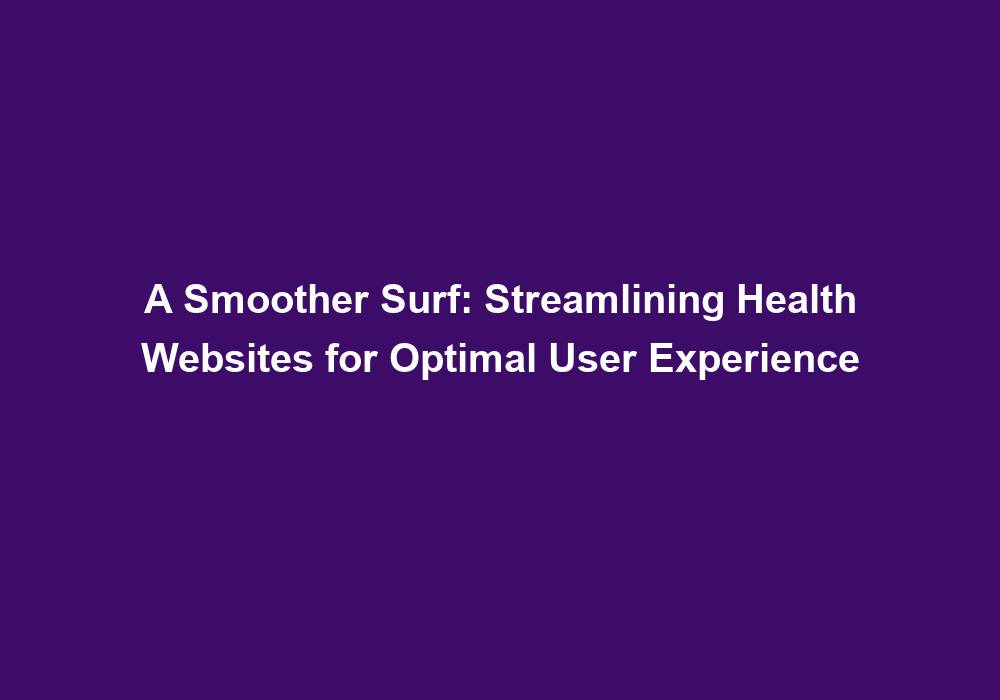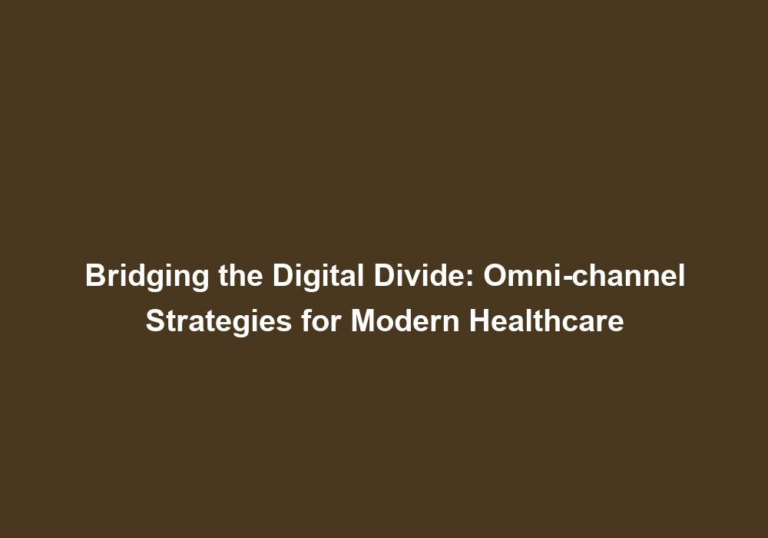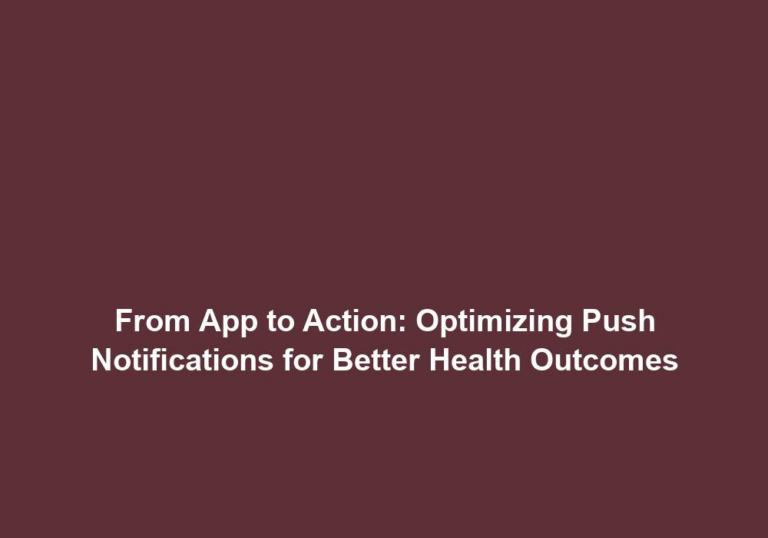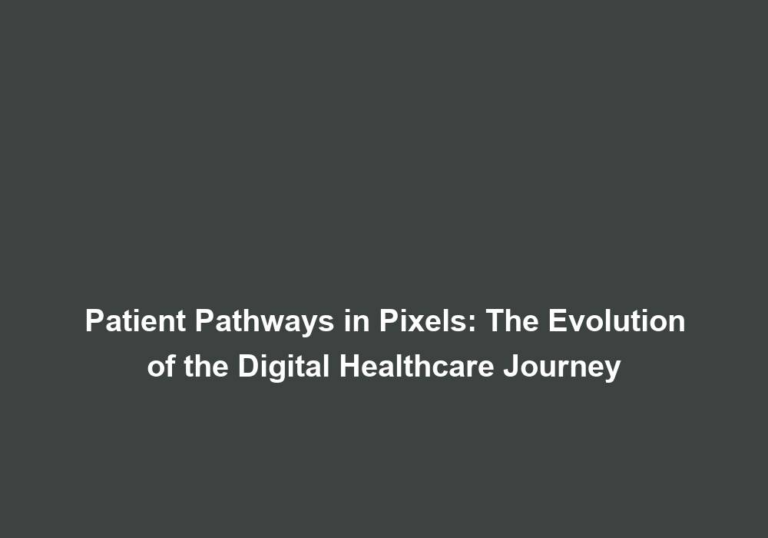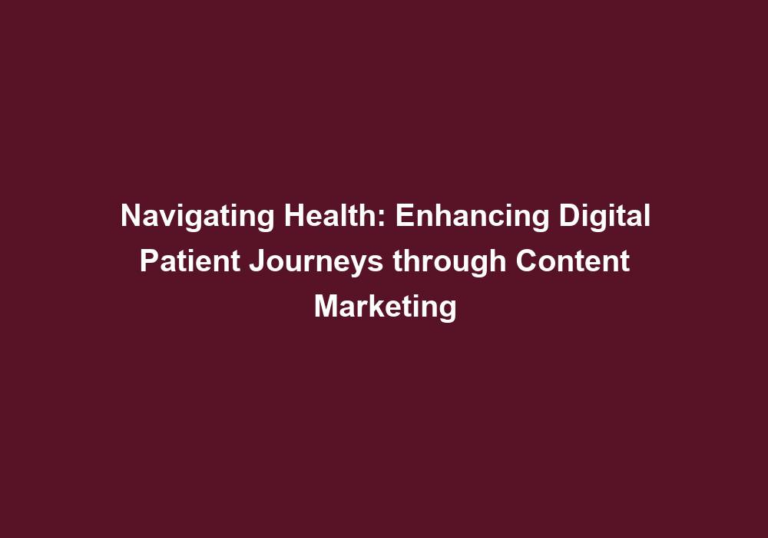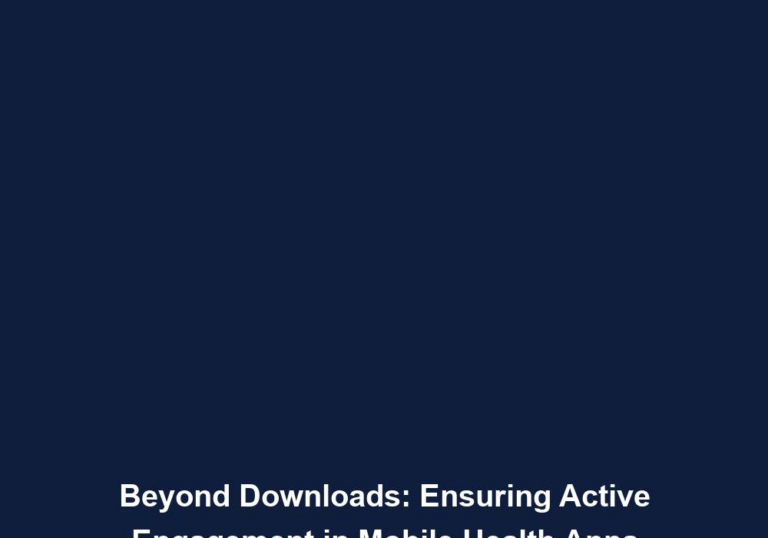A Smoother Surf: Streamlining Health Websites for Optimal User Experience
In today’s digital age, having a well-designed and user-friendly website is crucial for any business, especially in the healthcare industry. A user-friendly website not only helps attract and retain visitors but also ensures that they can easily find the information they need. Streamlining health websites for optimal user experience is therefore paramount. In this article, we will explore various strategies and best practices to create a smoother online surfing experience for users seeking health-related information.
Understanding User Needs
To streamline a health website, it is important to first understand the needs and expectations of the target audience. Healthcare consumers often visit websites to find information about specific conditions, treatment options, doctors, clinics, or to schedule appointments. By identifying the most common user needs, we can prioritize and structure the website accordingly.
Understanding the target audience enables healthcare providers to tailor the website’s content to meet their specific requirements. By conducting user research, such as surveys or analyzing website analytics data, healthcare organizations can gain insights into the types of information users are seeking. This information can be used to prioritize content, ensuring that the most relevant and sought-after information is easily accessible.
In addition to understanding the content needs of users, it is crucial to consider their browsing habits and preferences. Some users may prefer to navigate through a website using menus and categories, while others may rely on search functionality. By offering multiple navigation options, such as a clear menu structure and a search bar, healthcare websites can cater to the diverse needs and preferences of their users.
Clear and Concise Navigation
One of the key aspects of a user-friendly health website is intuitive navigation. Visitors should be able to easily find the information they are looking for without feeling overwhelmed or confused. Here are some tips to achieve clear and concise navigation:
- Use descriptive and straightforward menu labels and ensure they are prominently displayed. Labels such as “Conditions,” “Treatments,” “Doctors,” and “Clinics” can provide clear guidance to users, helping them navigate to the relevant sections of the website.
- Organize the menu items logically, grouping related topics together. For example, grouping different medical specialties under a single “Specialties” category can make it easier for users to browse and find the specific information they need.
- Implement a search bar that allows users to directly search for specific keywords or topics. This can be especially useful for users who have a clear idea of what they are looking for and prefer to search rather than navigate through menus.
- Include breadcrumbs to help users track their location within the website. Breadcrumbs provide a hierarchical trail of the user’s navigation path, making it easy for them to understand where they are and navigate back to previous pages if needed.
By implementing these navigation best practices, healthcare websites can ensure that users can easily find the information they need, reducing frustration and improving the overall user experience.
Responsive Design for All Devices
In today’s mobile-centric world, it is essential to have a website that is optimized for different devices and screen sizes. Responsive design ensures that the website adapts and displays properly on mobile phones, tablets, and desktop computers. This is especially important for healthcare websites as users may need to access information on the go or in emergencies.
To achieve responsive design, healthcare organizations should consider the following:
- Use a responsive framework or design template that automatically adjusts the layout and content based on the user’s device.
- Optimize images and other media files to ensure fast loading times on mobile devices with limited bandwidth.
- Test the website on different devices and screen sizes to identify any usability or display issues and make necessary adjustments.
- Prioritize the most important content and features for mobile users, ensuring that they have a seamless and efficient browsing experience.
By adopting responsive design principles, healthcare websites can provide a consistent and user-friendly experience across all devices, meeting the needs of their mobile-savvy users.
Fast Loading Speed
Users expect websites to load quickly. Slow loading speeds not only frustrate visitors but can also negatively impact search engine rankings. To optimize loading speed, healthcare organizations can take the following steps:
- Compress images and other media files without compromising their quality. This reduces file sizes and improves loading times.
- Minify CSS and JavaScript files to reduce their file sizes. Removing unnecessary white spaces, comments, and line breaks can significantly reduce file sizes and improve loading speed.
- Enable browser caching to store certain elements of the website locally on the user’s device. This allows subsequent visits to the website to load faster as the browser can retrieve cached resources instead of downloading them again.
By implementing these techniques, healthcare websites can provide a fast and seamless browsing experience, ensuring that users can access the information they need without any delays.
Engaging and Informative Content
High-quality content is the backbone of any successful health website. Users visit these websites to find reliable and accurate information that can help them make informed decisions about their health. To provide engaging and informative content, healthcare organizations should consider the following:
- Use clear and concise language that is easy to understand for all users. Avoid using complex medical jargon and explain medical terms when necessary.
- Break content into sections using headings and subheadings to improve readability. This allows users to quickly scan the content and find the information they are looking for.
- Include visuals such as images, infographics, or videos to enhance understanding. Visual content can help simplify complex concepts and make the content more engaging.
- Cite credible sources and provide references for medical information. This adds credibility to the content and allows users to verify the information from trusted sources.
- Regularly update content to ensure accuracy and relevance. Healthcare information is constantly evolving, and it is important to keep the website’s content up to date to provide users with the most current information.
By focusing on creating engaging and informative content, healthcare websites can establish themselves as trusted sources of information, attracting and retaining users.
Appointment Booking and Contact Information
For healthcare providers, it is important to make it easy for patients to schedule appointments or contact the clinic. Incorporating user-friendly features such as online appointment booking systems or clickable phone numbers can greatly improve the user experience. Additionally, ensure that the contact information is easily accessible and prominently displayed on all pages of the website.
By providing convenient appointment booking options and prominently displaying contact information, healthcare websites can simplify the process for patients, allowing them to quickly and easily connect with healthcare providers.
Personalization and Customization
Personalizing the user experience can greatly enhance engagement and satisfaction. Consider implementing features such as:
- User accounts that allow users to save preferences or bookmark relevant pages. This enables users to easily access their saved content and personalized recommendations.
- Personalized recommendations based on user browsing history or specific health interests. By analyzing user behavior and preferences, healthcare websites can suggest relevant content or services, enhancing the user experience.
- Customizable user interfaces that allow users to adjust font size, color schemes, or other display options. This accommodates users with different needs and preferences, ensuring a personalized browsing experience.
By offering personalized features, healthcare websites can create a more tailored and engaging experience for their users.
Accessibility for All Users
To ensure inclusivity and accessibility, it is important to design health websites with all users in mind, regardless of their abilities. Consider the following aspects:
- Implement alt text for images, making them accessible to visually impaired users. Alt text provides a textual description of the image, allowing screen readers to convey the information to users.
- Provide transcripts or captions for audio and video content to assist users with hearing impairments. This ensures that all users can access the information presented in multimedia formats.
- Ensure proper color contrast for readability, especially for users with visual impairments. High color contrast between text and background improves readability for all users, including those with visual impairments.
- Use semantic HTML tags and proper heading structures for screen readers to interpret the content accurately. Screen readers rely on HTML tags to navigate through the content, and using proper heading structures ensures a logical and accessible reading experience.
By designing with accessibility in mind, healthcare websites can ensure that all users, regardless of their abilities, can easily access and navigate the content.
Conclusion
In conclusion, streamlining health websites for optimal user experience is a crucial aspect of modern web design. By understanding user needs, implementing clear navigation, optimizing loading speed, providing engaging content, facilitating appointment booking, and ensuring accessibility, health websites can effectively serve their users. Remember, a user-friendly website not only attracts and retains visitors but also enhances the reputation and credibility of the healthcare provider.

